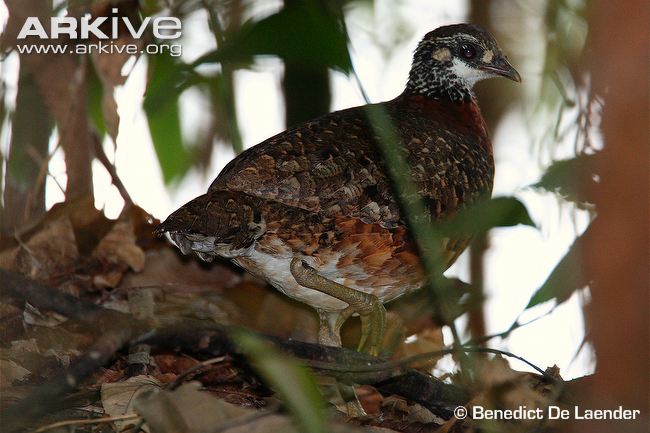| Citation |
|
Description |
Geographic Range [top]
Range Description: Arborophila charltoni has a disjunct, mainly Sundaic distribution ranging (race charltoni) from southern Myanmar and southern Thailand into Peninsular Malaysia, and is present (race atjenensis) in two isolated areas (Aceh and South Sumatra) of Sumatra, Indonesia (BirdLife International 2001). Seems to tolerate disturbed forest with records from degraded sites in south Thailand, but there are very few recent records anywhere on Sumatra and it may only survive here in the north (del Hoyo et al. 1994, BirdLife International 2001, Madge and McGowan 2002).
Countries occurrence:
Native:
Indonesia; Malaysia; Myanmar; Thailand
Additional data:
? Continuing decline in area of occupancy (AOO): Unknown
? Extreme fluctuations in area of occupancy (AOO): No ? Estimated extent of occurrence (EOO) - km2: 869000
? Continuing decline in extent of occurrence (EOO): Unknown ? Extreme fluctuations in extent of occurrence (EOO): No
? Continuing decline in number of locations: Unknown
? Extreme fluctuations in the number of locations: No
? Upper elevation limit (metres): 500
Range Map: Click here to open the map viewer and explore range.
Population [top]
Population: The global population is thought to number fewer than 10,000 mature individuals (perhaps fewer than 2,500, as the nominate may number fewer than 1,000 individuals, and atjenensis fewer than 100 [BirdLife International 2001, Madge and McGowan 2002]), with no subpopulations numbering more than 1,000 mature individuals.
Trend Justification: There are no data on population trends; however, habitat loss and degradation, in combination with trapping pressure, are suspected to be driving a moderately rapid decline.
Current Population Trend: Decreasing
Additional data:
? Number of mature individuals: 2500-9999 ? Continuing decline of mature individuals: Yes
? Extreme fluctuations: No ? Population severely fragmented: No
? Continuing decline in subpopulations: Unknown
? Extreme fluctuations in subpopulations: No ? All individuals in one subpopulation: No
Habitat and Ecology [top]
Habitat and Ecology: This species inhabits lowland forest to 500 m, including disturbed forest (del Hoyo et al. 1994, BirdLife International 2001, Madge and McGowan 2002).
Systems: Terrestrial
Continuing decline in area, extent and/or quality of habitat: Unknown
Generation Length (years): 5.4
Movement patterns: Not a Migrant
Threats [top]
Major Threat(s): Forest destruction in the Sundaic lowlands of Indonesia and Malaysia has been extensive (Sumatra lost almost 30% of its forest cover 1985-1997), because of a variety of factors, including the escalation of logging and land conversion, with deliberate targeting of all remaining stands of valuable timber including those inside protected areas, plus forest fires (particularly in 1997-1998). Declines caused by habitat loss are compounded by trapping for the cage-bird trade.
Conservation Actions [top]
Conservation Actions: Conservation Actions Underway
None is known.
Conservation Actions Proposed
Survey to assess the size of all sub-populations. Monitor trends in all sub-populations. Research the speciess tolerance of logged forest. Protect large areas of primary and old secondary forest within its range.
Citation: BirdLife International. 2016. Arborophila charltonii. The IUCN Red List of Threatened Species 2016: e.T22727395A94948018. http://dx.doi.org/10.2305/IUCN.UK.2016-3.RLTS.T22727395A94948018.en. Downloaded on 20 November 2018.
Disclaimer: To make use of this information, please check the .
Feedback: If you see any errors or have any questions or suggestions on what is shown on this page, please provide us with feedback so that we can correct or extend the information provided
|

